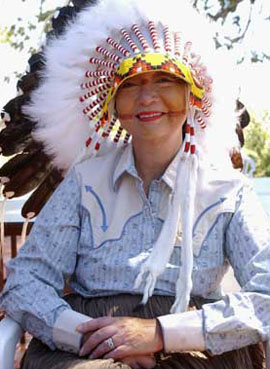Is the old British dominion in Canada still half-alive (sort of) .. as well as historically interesting?
Sep 15th, 2016 | By Counterweights Editors | Category: In Brief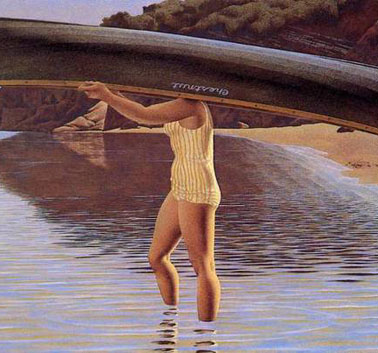 For those who may be interested, Prince William and Kate and their children from the UK will begin a visit to British Columbia and the Yukon a week this Saturday.
For those who may be interested, Prince William and Kate and their children from the UK will begin a visit to British Columbia and the Yukon a week this Saturday.
As if in anticipation, the National Post – Conrad Black’s old last gasp of the colonized mind in Canada – has published some remarks by the self-confessed “romantic constitutional monarchist” John Fraser. In a nutshell Mr. Fraser urges that the British monarchy is a key to resolving the place of First Nations in the 21st century Canadian future.
This is an argument advanced by many romantic monarchists in Canada nowadays. And, like Mr. Fraser, they typically claim that the bewilderment it frequently raises elsewhere is just “evidence of many Canadians’ ignorance of their own history.”
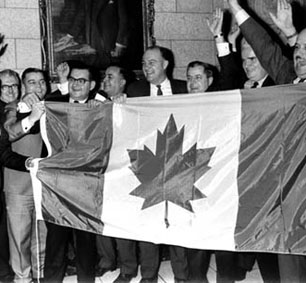
. MP s celebrate approval of new independent Canadian flag by a 163 to 78 vote in the Canadian House of Commons, December 15, 1964.
Yet Canadian history in this sense remains a kind of abstract Tory invention, remote from the plain facts of the past. To take just one of so many cases in point, it forgets what the Grit Richard Cartwright told the Canadian House of Commons as long ago as 1889 : “Men [and today we  explicitly add women] are beginning to ask themselves on all hands whether this Confederation is to be a political cul de sac, or … a stepping stone to a higher form of political existence.”
On First Nations the romantic monarchist view of the Canadian past most awkwardly forgets the compelling sentence in the conclusion to Harold Innis’s 1930 classic on The Fur Trade in Canada : An Introduction to Canadian Economic History : “We have not yet realized that the Indian and his culture were fundamental to the growth of Canadian institutions.”
“Canada” itself is an aboriginal or indigenous word. And it is when what John Fraser calls “the non-aboriginal Canadian people” finally start to appreciate how the indigenous experience is a crucial part of being Canadian today, for everyone, that Fraser’s “healing” of  “First Nation and Inuit communities,” now “broken in body and soul,” will begin in earnest at last.
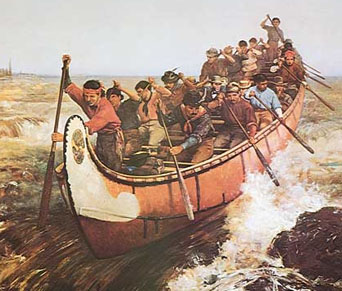
Canot de maître shooting the Rapids, Frances Anne Hopkins,1879. It was the multiracial and multicultural fur trade, not the British monarchy, that first took Canada from coast to coast to coast.
This is a challenging assignment, no doubt. But we the Canadian people of 2016 – aboriginal and non-aboriginal alike – must face up to it openly, if First Nations are ever going to secure their just and proper place in the real-world Canadian future.
To suggest we can continue to evade the all-too-human difficulties by simply asserting the British monarchy is “the only actual instrument of governance in Canada” that can unite aboriginal and non-aboriginal Canadians is a romantic cruel illusion at best.
Just to start with, the British monarchy is no longer an “actual instrument of governance in Canada” today – as anyone who has read George VI’s 1947 Letters Patent for the Governor General of Canada will appreciate. (The digital version of the Canadian Encyclopedia has minor quibbles here, but nothing that changes the essential modern facts of life. As the Encyclopedia also notes, two recent governor generals have even understood that “the Letters Patent, 1947 devolved the position of Head of State from the sovereign to the governor general” – although the Harper government rejected this interpretation in 2009.)
In any case, what Mr. Fraser’s argument finally reminds us is that it is high time for another installment  of Randall White’s work-in-progress, tentatively entitled Children of the Global Village – Canada in the 21st Century : Tales about the history that matters.
If you go to our Long Journey to a Canadian Republic page, on the bar above (or just CLICK HERE), you will find a short introduction to the project, along with the “Prologue : too much geography.” This is followed by links to the currently completed six chapters in Part I, and four  chapters in Part II. To begin Part III on the old Dominion of Canada, you will now find as well a link to Part III, Chapter 1 : “First self-governing dominion of the British empire : Further founding moments, 1867—1873.”
Once again, we caught up with Dr. White and his irresistible business manager at the Tim Horton’s across from Kew Gardens in Toronto (another aboriginal or indigenous word). And he explained :
“Some say the old British dominion of Canada ended during Pierre Trudeau’s government in 1971, when the Dominion Bureau of Statistics was renamed Statistics Canada. I believe the end began with Lester Pearson’s government in 1963. But writing about the growth of Canadian democracy from the 1867 confederation to the early 1960s has proved somewhat different than I first conceived.”
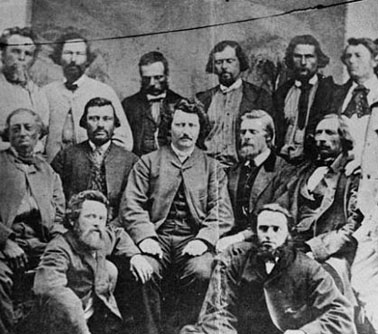
Louis Riel (centre) and his spring and summer 1870 provisional government of the future Canadian province of Manitoba.
He went on : “I  thought I would do it in four chapters, but now I see it will take six : 1867—1873, 1873—1896, 1896—1911, 1911—1921, 1921—1948, and 1948—1963. In the first of these chapters I was also more drawn into the story of the Métis leader Louis Riel as founder of Manitoba than first planned. I hope the chapter is not too long as a result – or is at least a little more interesting to readers, to compensate for the extra length.”
(And then Dr. White and his business manager wandered off to buy more fresh corn  – traditional crop of the ancient Wendat/Huron nation due north –  on the last unseasonably warm day of summer 2016.)
